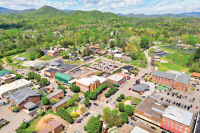Federal law formalizes heritage area system
The National Heritage Areas Act, which President Joe Biden signed into law on Jan. 5, has implications for Western North Carolina. The act establishes a National Heritage Area System and a statutory framework for the NPS’s role in its administration, as well as designating, extending and authorizing studies for National Heritage Areas across the United States.
Described by the National Park Service as “a first-of-its-kind, landmark legislation,” the act formalizes standard criteria in oversight, analysis, coordination and support to ensure consistency and accountability of the NHA System.
“National Heritage Areas represent the unique fabric of America and serve as points of community pride, where locals and visitors alike can come together in the spirit of unity and share in collective experiences,” said NPS Director Chuck Sams. “The NHA Act formalizes the relationship between the National Park Service and National Heritage Areas and will further paint America’s heritage landscape beyond the canvas of national parks.”
The United States’ 62 NHAs include the Blue Ridge Natural Heritage Area, which comprises all of Western North Carolina and stops just short of Hickory and Winston-Salem.
NHAs are designated by Congress as places where natural, cultural and historical resources combine to form cohesive, nationally important stories. Unlike national parks, NHAs are lived-in communities and not federally owned but may contain parks or other federally owned property. Through public-private partnerships, NHAs tell nationally important stories that celebrate our nation’s diverse heritage.
President Ronald Reagan signed the first NHA into law in 1984 when he officially designated the Illinois and Michigan Canal National Heritage Corridor. Today, the NHA System is composed of National Heritage Areas, National Heritage Corridors, National Heritage Canalways, Cultural Heritage Corridors, National Heritage Routes and National Heritage Partnerships.





